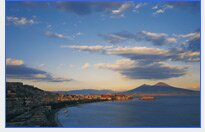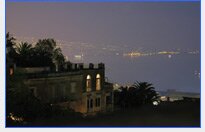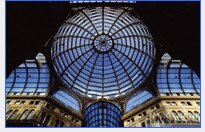
HOME Information Request Form Registration Form Conditions
| English Spanish French German Italian Russian Polish Chinese Japanese Greek Portuguese Summer Camps |
||
|
|
Learn Italian in Naples in Italy
The school is in the heart of the historic centre of the city, in the district of Universities, not far from the Piazza della Borsa for those who know a little. Tuition programs.
|
Starting Dates
Beginners starting dates. School closing dates.
Available options:
|
||||||||||||||||||||||||||||||||||||
  
RATES Currency Converter
|
|||||||||||||||||||||||||||||||||||||
Accommodation : Shared apartment or private studio. Hotel upon request.
* Add. day (single or double): 35 Euros
|
|||||||||||||||||||||||||||||||||||||
Creative writing
Cultural activitiesSince the language is a vehicle and mirror of the society in which it is used, lectures on topics and aspects of Italian civilization and culture are run parallel to the language course. History of art: the City The history of the Italian Cinema Naples: its history and tradition Italian Music Neapolitan Music Eduardo de Filippo and the Neapolitan Theatre The Italian Regions City information
The origins of the city seem to be rather uncertain, even if one presumes it to be work of the Greeks. In fact, forced by the need to discover new lands, the Greeks founded towns and colonies in Asia Minor and along the Sicilian and Grecian coasts It was right here that the first Greek colony, called Cuma, was built and its inhabitants later renamed it Neapolis (Naples), to differentiate it from an already existing Phoenician centre called Partenope. In the year 90 BC Naples gained Roman citizenship and at that time had about 30.000 inhabitants. Its mild climate, beautiful spots and spas made it a splendid holiday resort. Aristocrats started building their most beautiful villas between Posillipo, Chiaia and the island of Megaride. The town started to swarm with jewellers, smiths, perfume manufacturers, marble workers, etc..., until the Augustian period , when poets and famous writers fell under the cultural spell of the town. Numerous very important theatres and splendid temples were built in this period. In the eighteenth and nineteenth centuries, Naples reached its apex and was named "the most beautiful bay in the world". Some places are so beautiful and magical that they do not seem real, pervaded with a unique and impalpable atmosphere, with enchantment and colours like those in a beautiful painting. This is certainly true of “the most beautiful bay in the world” – as the Gulf of Naples has often been called – the kingdom of sunshine, sea and city, which are like artistic jewels. History, culture, wonderful walks and the sea, as far as the eye can see, a corner of paradise: this is the wonderful gulf. Sea and sailing enthusiasts will be delighted to discover the most evocative corners of the islands and coast which they will be able to enjoy in total peace and quiet, discovering unforgettable parts of paradise.
The charm that Naples emanates transcends simple and monumental historical beauty, but is concentrated, above all, in the singular and unique atmosphere that pervades its roads, alleys, castles, churches and museums. A magic atmosphere composed of colours and smells, of rowdy shouting which enlivens every corner of the town, views and panoramas worthy of an artist’s painting. This is Naples, beautiful enough to take your breath away, with the splendour of ancient palaces and piazzas that seem like incredible amphitheatres. You will not fail to appreciate its charm and, here more than anywhere else, are bound to be infected by the intensity of its warm-hearted people. The monumental, imposing Piazza del Plebiscito can be said to be the symbol of Naples. As you walk in the silence and beauty of this place you will discover another fascinating and magical side of Naples, far from the noise and smog of the city. The impressive semi-circular colonnade of San Francesco di Paola and the facade of Palazzo Reale are really spectacular. Built in imitation of the Pantheon, the church is like a pagan temple with its Ionic columns, side pillars and triangular tympanum. Always under the constant assault of photographers, the Piazza is an enormous, airy space, a complete contrast to the noisy alleyways and streets immediately behind it, where the sun barely filters through. The square is also a favourite background for newly-weds who pose for their traditional wedding photographs. The work of the architect Domenico Fontana, the majestic and famous Royal Palace, was built in 1600, in the area between the “Salita del Gigante" and Castel Nuovo, adjoining the park of the same name. The palace facade is divided into 3 tiers supported by Doric, Corinthian and Ionic pillars. There are three entrances on the ground floor; the central one, with its double columns, is dominated by a balcony with a broken tympanum decorated with coats of arms and a marble banister. Statues of the most important kings of Naples are housed in the niches in the first tier. The royal chambers are very beautiful, with rich furnishings and sculptures and the throne room, that holds the Titian masterpiece "The portrait of Pier Luigi Farnese". Currently some of the palace’s rooms are used as the offices of various institutions and since 1804 the National Library has had its headquarters here. The impressive and majestic structure of Castel Nuovo or Maschio Angioino is located in the splendid and evocative Piazza Municipio. Built by order of Carlo d'Angiò, the castle was named "new" to distinguish it from Castel dell'Ovo and Castel Capuano, and was called Maschio Angioino after its founder. Several important historical events have been linked to Castel Nuovo: for example Celestino the Fifth’s "great refusal" of the papacy and the election of Bonifacio VIII. The poet F. Petrarca was one of Roberto d'Angiò’s guests in 1341 and Boccaccio also visited the fortress several times. Castel Nuovo was the political and cultural hub of Naples; you must cross a door and a draw-bridge to enter it. The castle preserves remarkable historical and artistic works and is home to the Civic Museum and its important paintings. One of the most beautiful and famous squares in Naples is, without a doubt, Piazza del Gesù Nuovo. The eighteenth century Pignatelli and Sanfelice Palaces, the spire of the Immacolata and the church of Gesù Nuovo are all located in this square. What strikes you most is the monastery and church of Santa Chiara, built for the wife of Roberto d’Angio. The monumental gothic buildings were completely transformed in the baroque period. You enter the church, completely renovated in yellow Pozzuoli tufa, through an archway crowned by a cross vault. The sepulchre of Roberto d’Angio is one of most beautiful examples of Italian gothic art. The interior of the church is richly decorated and contains valuable paintings. The bell-tower and cloisters, surrounded by four arcades are very interesting Stalls, peddlers, side shows, shouting, colours and voices are the typical characteristics of the Neapolitan quarters, a reference point for bargain hunters. Fish, fruit, vegetables and chickens mix with the crowds of visitors and shoppers, in a perfect harmony of colours and odours. Some of the markets that are held daily are those at Porta Nolana, Capuana, Duchesca, Pignasecca, Fuorigrotta and San Pasquale. Posillipo market, held every Thursday morning, is very nice, a crowded weekly event attended by Scalfaro during his visits to Naples. A picturesque atmosphere, sounds and colours are typical of the Casoria market, unique of its kind and invaded by an endless bustle of people and rare objects. Naples weather
|
Tel: +1 (514) 844-2831 Fax: +1 (514) 844-2018 Email: